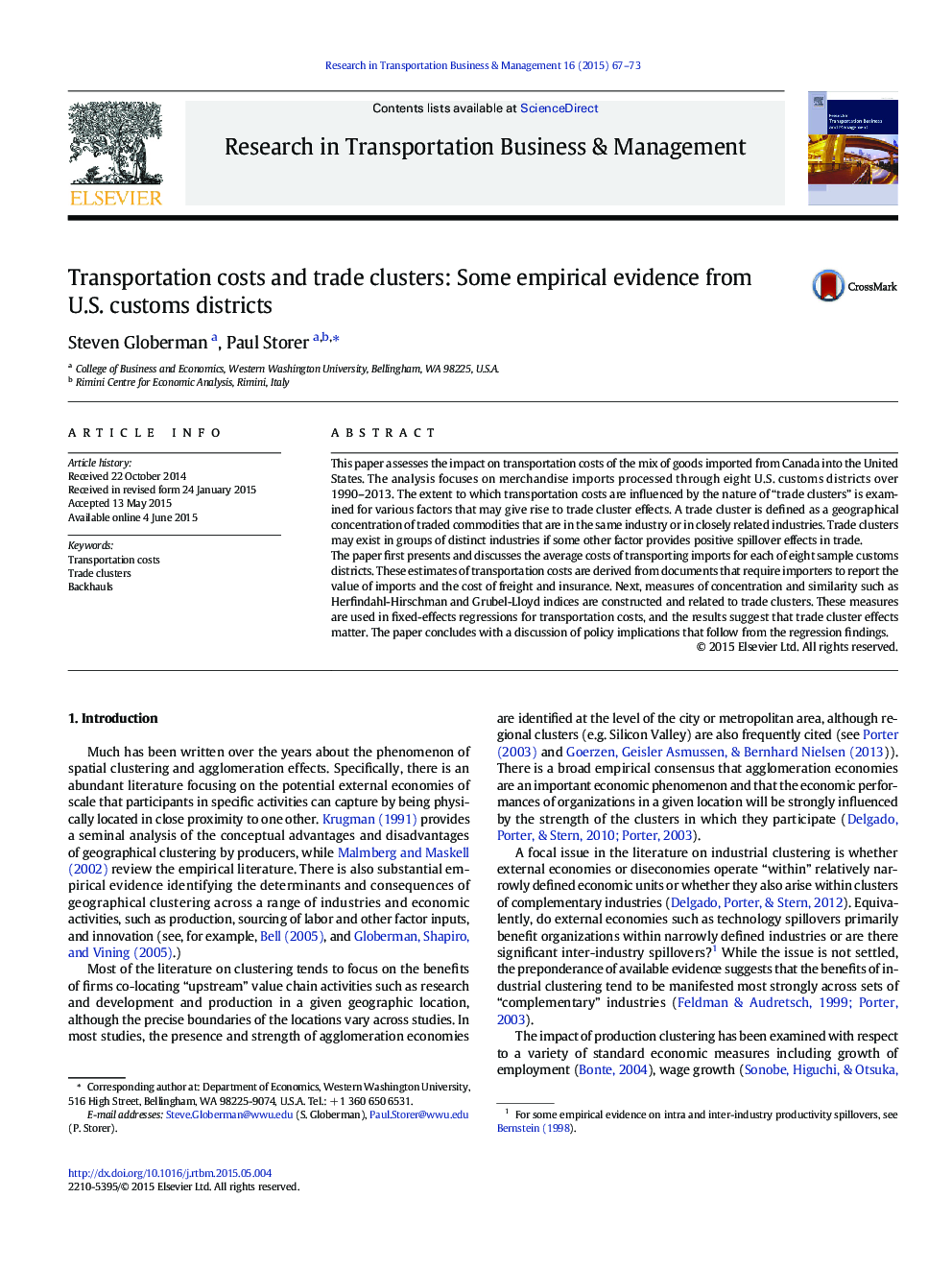| Article ID | Journal | Published Year | Pages | File Type |
|---|---|---|---|---|
| 998686 | Research in Transportation Business & Management | 2015 | 7 Pages |
This paper assesses the impact on transportation costs of the mix of goods imported from Canada into the United States. The analysis focuses on merchandise imports processed through eight U.S. customs districts over 1990–2013. The extent to which transportation costs are influenced by the nature of “trade clusters” is examined for various factors that may give rise to trade cluster effects. A trade cluster is defined as a geographical concentration of traded commodities that are in the same industry or in closely related industries. Trade clusters may exist in groups of distinct industries if some other factor provides positive spillover effects in trade.The paper first presents and discusses the average costs of transporting imports for each of eight sample customs districts. These estimates of transportation costs are derived from documents that require importers to report the value of imports and the cost of freight and insurance. Next, measures of concentration and similarity such as Herfindahl-Hirschman and Grubel-Lloyd indices are constructed and related to trade clusters. These measures are used in fixed-effects regressions for transportation costs, and the results suggest that trade cluster effects matter. The paper concludes with a discussion of policy implications that follow from the regression findings.
